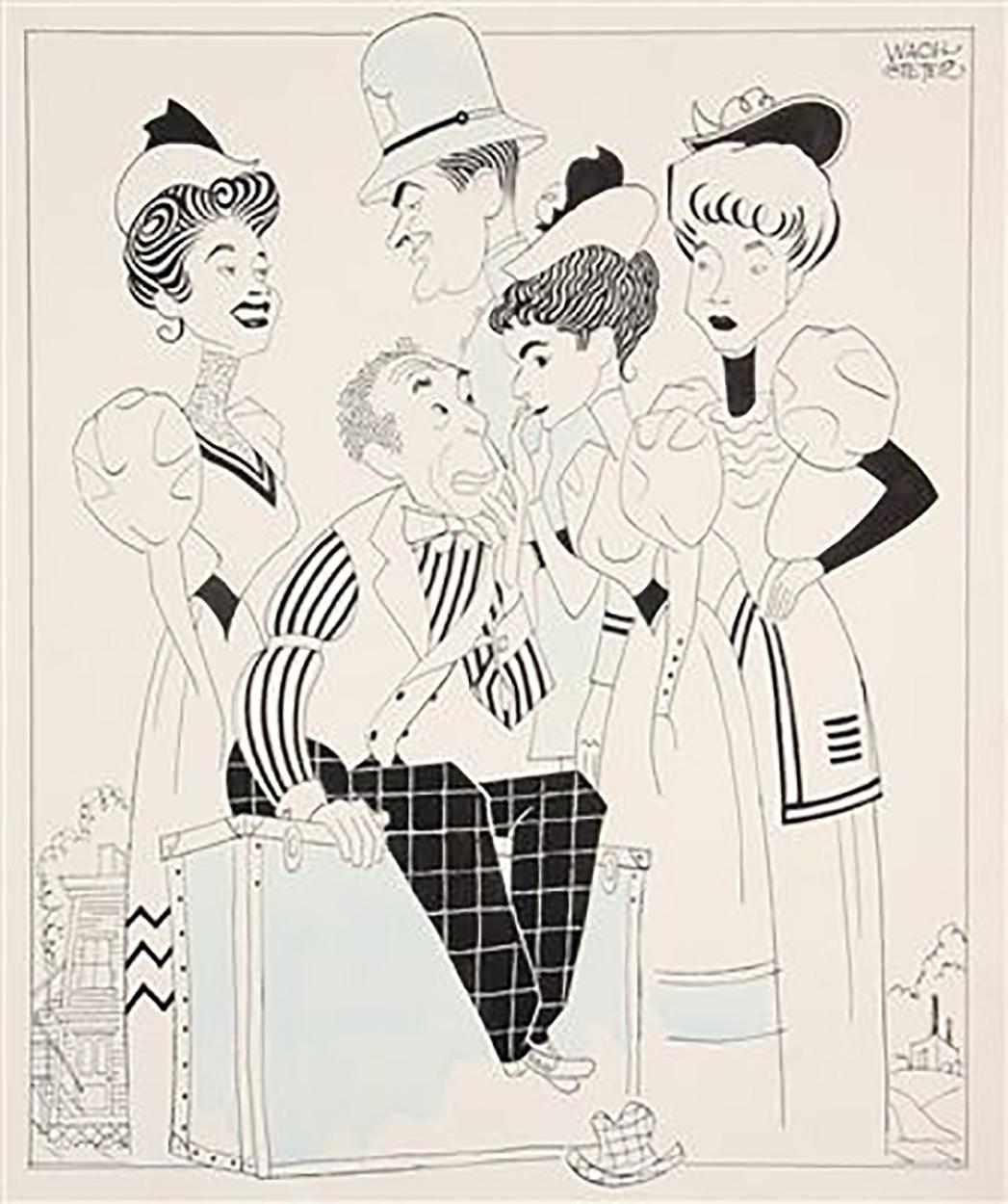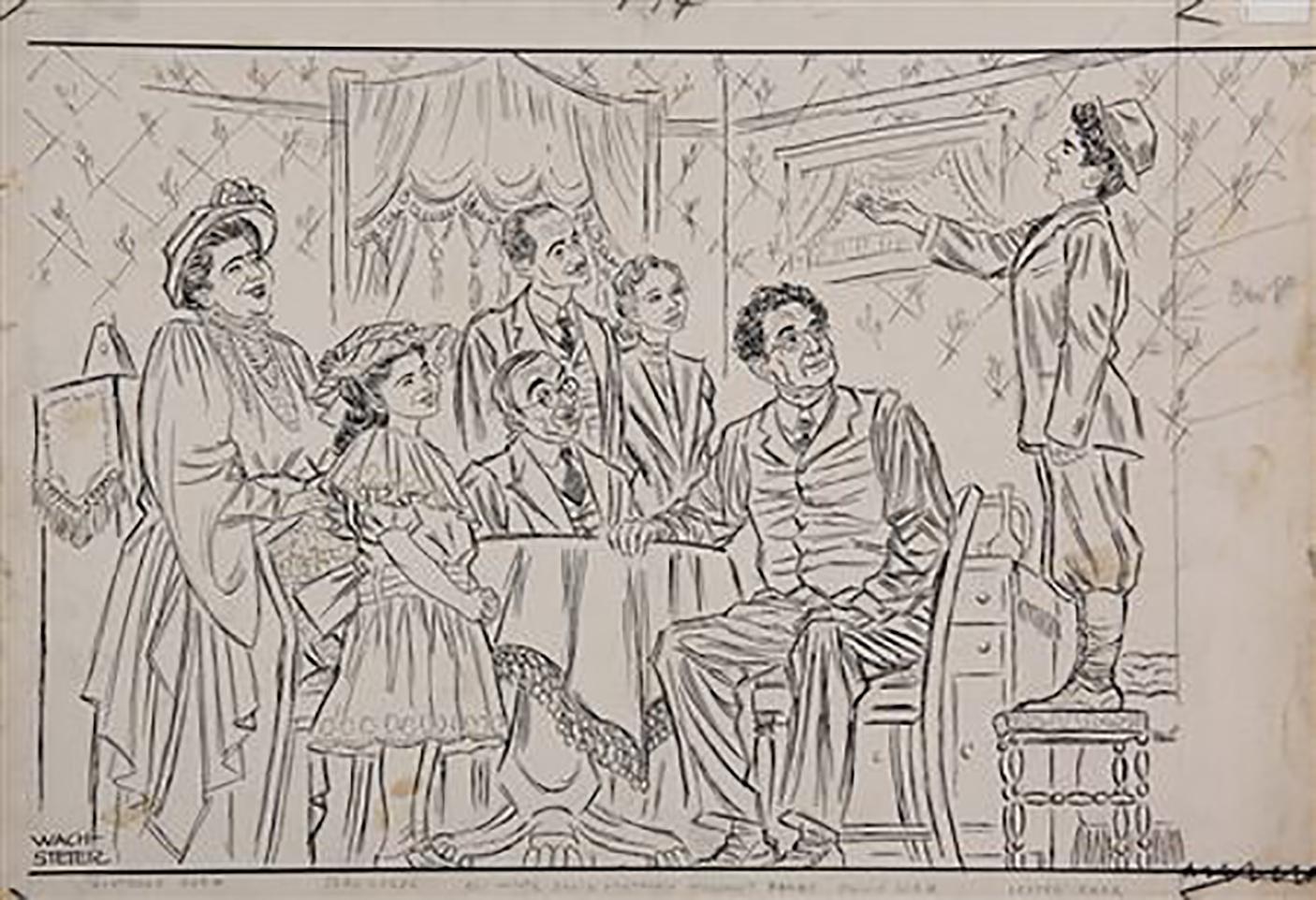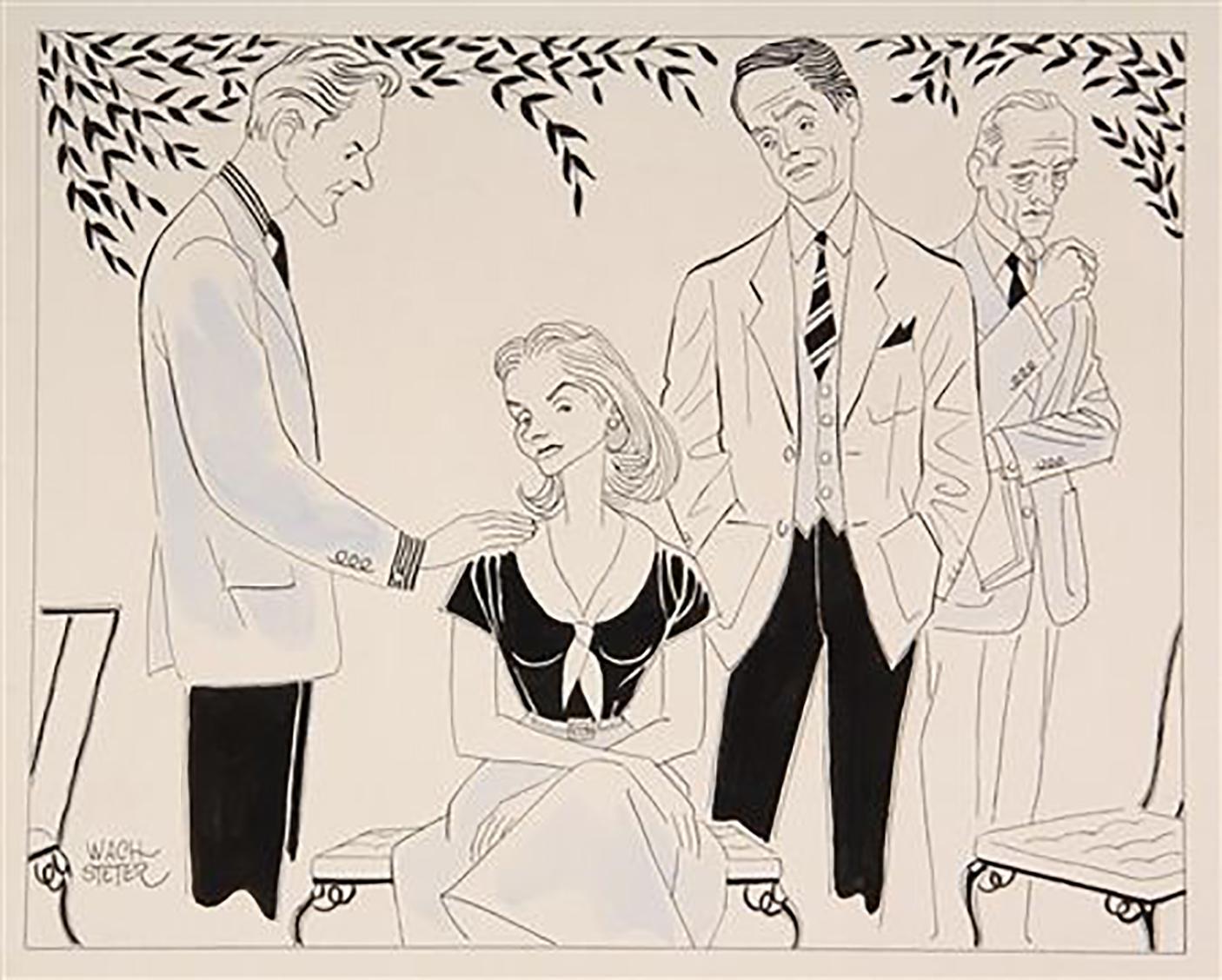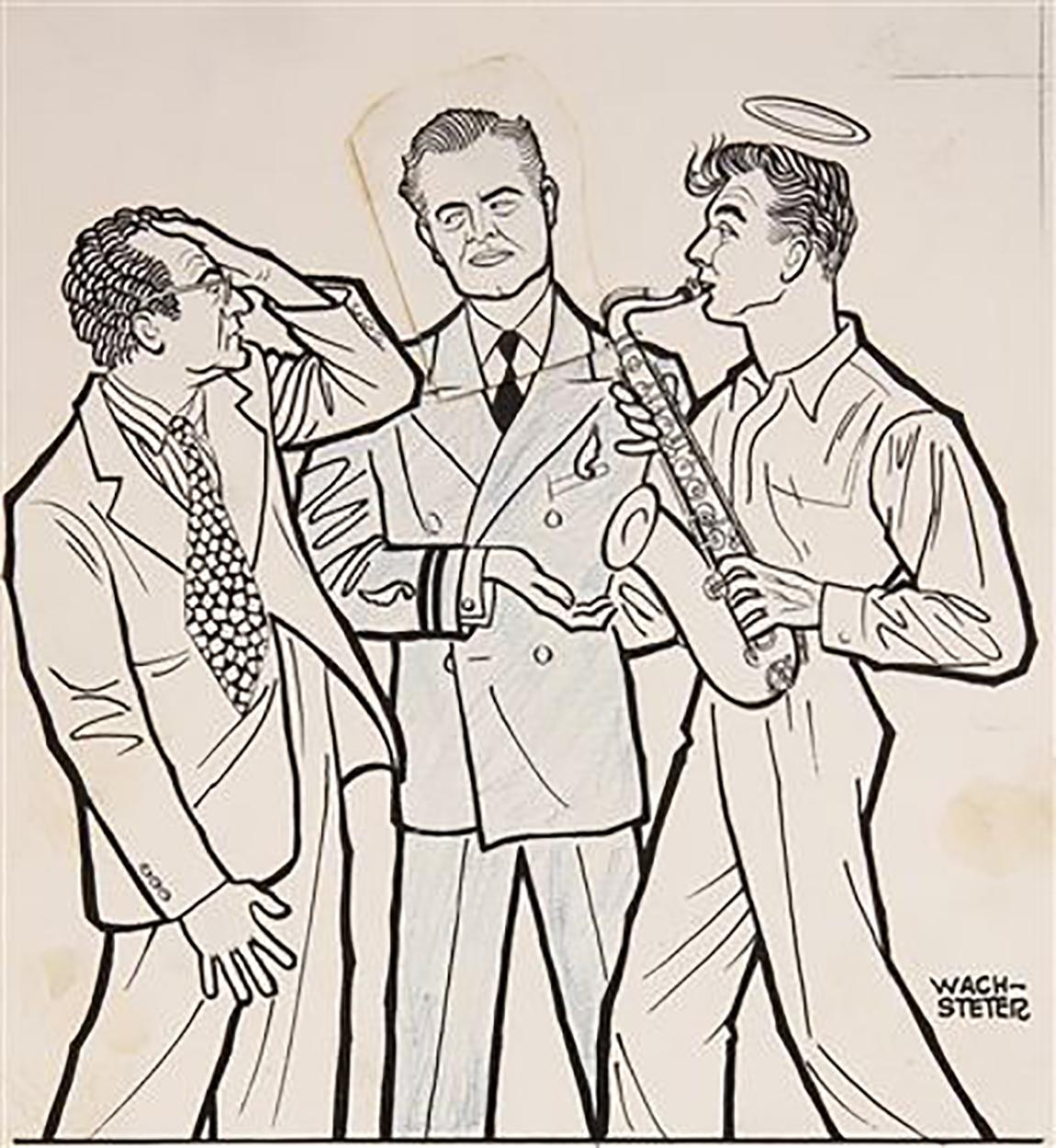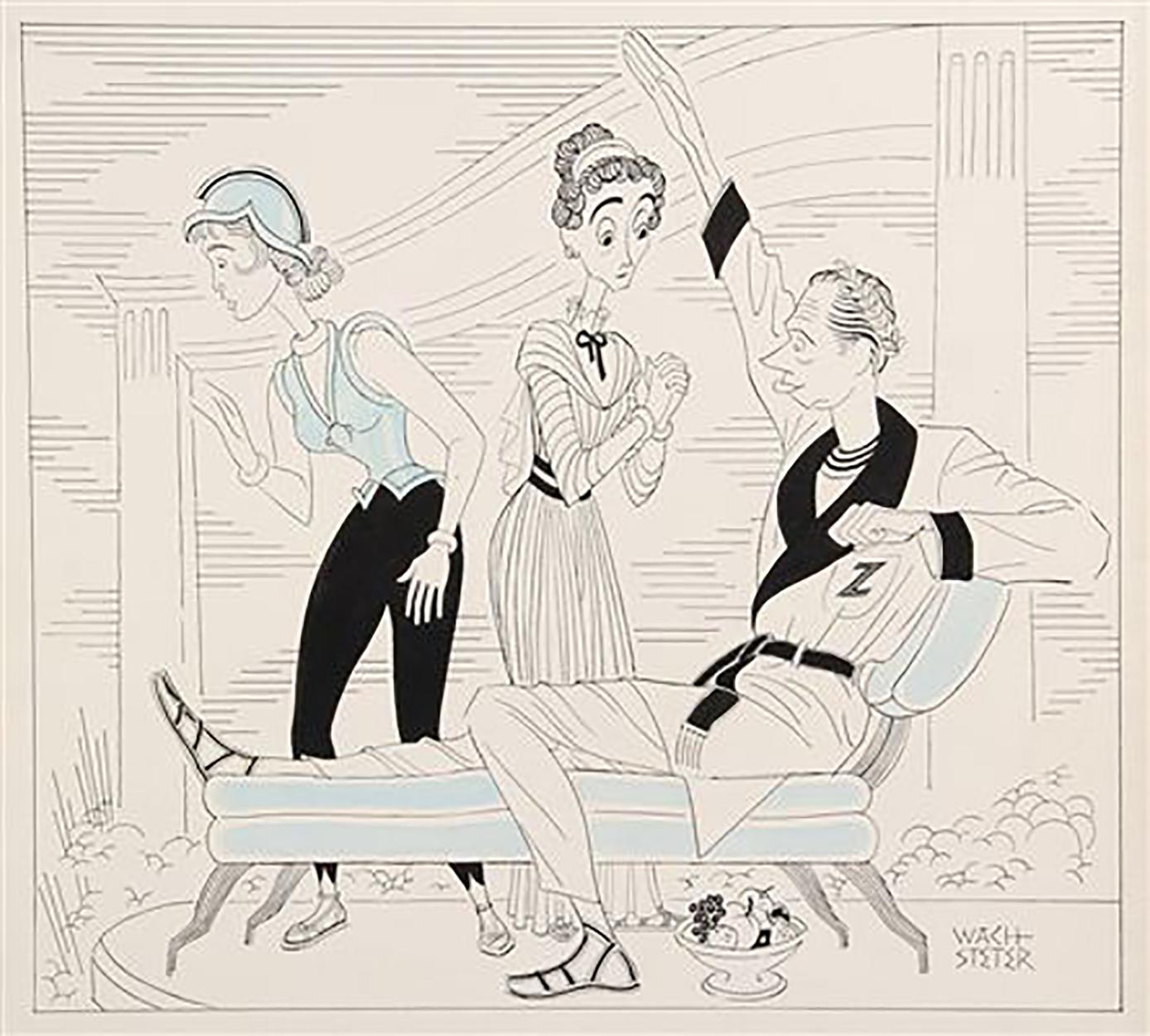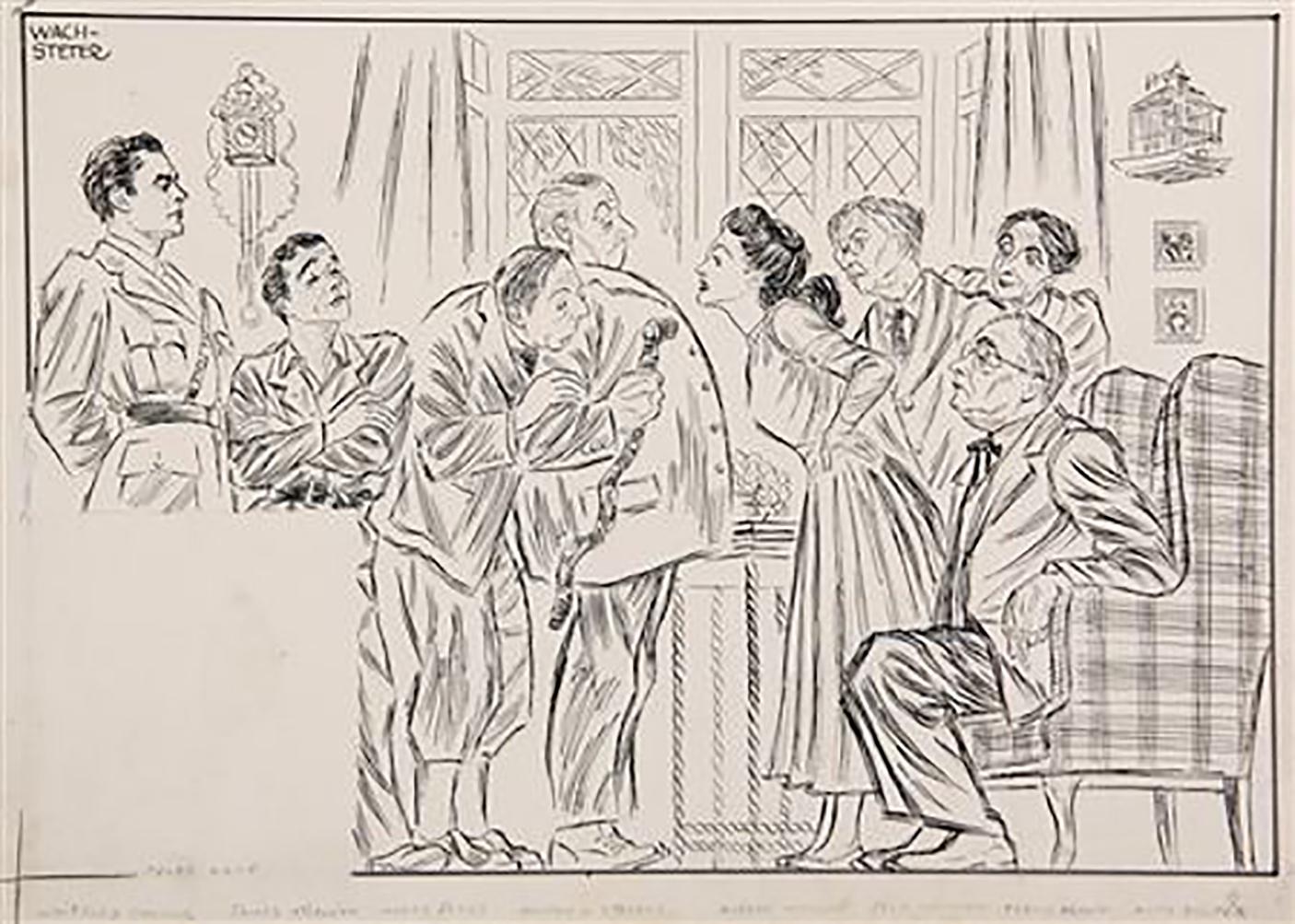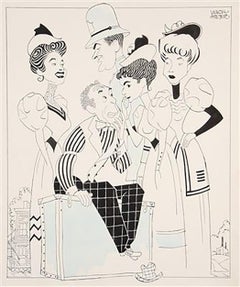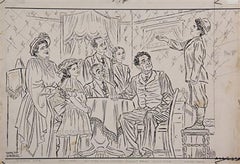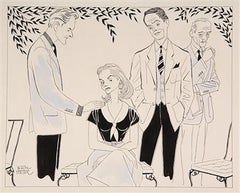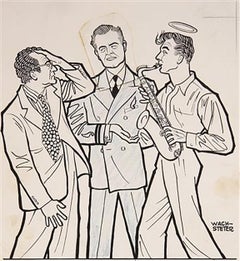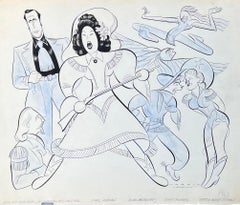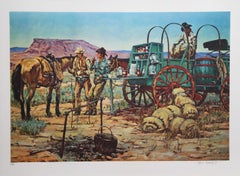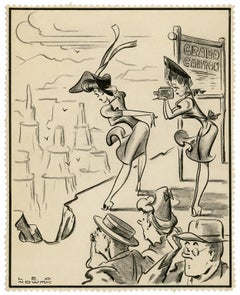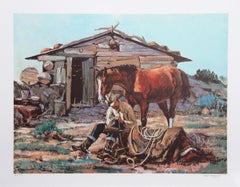Items Similar to "Oklahoma!", the Broadway Musical
Want more images or videos?
Request additional images or videos from the seller
1 of 7
George Wachsteter"Oklahoma!", the Broadway Musical1943
1943
$1,750
£1,307.17
€1,515.45
CA$2,429.83
A$2,723.53
CHF 1,418.06
MX$33,255.44
NOK 18,004.22
SEK 17,066.39
DKK 11,306.90
Shipping
Retrieving quote...The 1stDibs Promise:
Authenticity Guarantee,
Money-Back Guarantee,
24-Hour Cancellation
About the Item
Medium: Pen and Ink on Illustration Board
Signature: Signed Lower Right
Drawing by George Wachsteter (1911-2004), promoting `Oklahoma!` the Broadway Musical, with Harold (Howard) Keel replacing Alfred Drake in the lead role of Curley, ca 1946. He is depicted with (l to r), Bruce Hamilton as Jud Fry, Ruth Weston as Aunt Eller, Mary Hatcher as Laurey, Dorothea McFarland as Gertie Cummings and David Burns as Persian Peddler. This production ran March 31, 1943 - May 29, 1948 at the St James Theatre. Bruce Hamilton appeared as Jud May-Sept, 1946.
This illustration is on 15.00" x 20.00" illustration board with a 10.00" x 15.50" image. Used for the New York Journal-American.
- Creator:George Wachsteter (1911 - 2004)
- Creation Year:1943
- Dimensions:Height: 10 in (25.4 cm)Width: 15.5 in (39.37 cm)
- Medium:
- Period:
- Condition:Some soiling.
- Gallery Location:Fort Washington, PA
- Reference Number:Seller: 22031stDibs: LU38436362972
About the Seller
5.0
Recognized Seller
These prestigious sellers are industry leaders and represent the highest echelon for item quality and design.
Platinum Seller
Premium sellers with a 4.7+ rating and 24-hour response times
Established in 1995
1stDibs seller since 2016
127 sales on 1stDibs
Typical response time: 3 hours
- ShippingRetrieving quote...Shipping from: Fort Washington, PA
- Return Policy
Authenticity Guarantee
In the unlikely event there’s an issue with an item’s authenticity, contact us within 1 year for a full refund. DetailsMoney-Back Guarantee
If your item is not as described, is damaged in transit, or does not arrive, contact us within 7 days for a full refund. Details24-Hour Cancellation
You have a 24-hour grace period in which to reconsider your purchase, with no questions asked.Vetted Professional Sellers
Our world-class sellers must adhere to strict standards for service and quality, maintaining the integrity of our listings.Price-Match Guarantee
If you find that a seller listed the same item for a lower price elsewhere, we’ll match it.Trusted Global Delivery
Our best-in-class carrier network provides specialized shipping options worldwide, including custom delivery.More From This Seller
View All"Uncle Willie"
By George Wachsteter
Located in Fort Washington, PA
Medium: Pen and Ink on Illustration Board
Signature: Signed Upper Right
Caricature by George Wachsteter (1911-2004) for Broadway Comedy, `Uncle Willie` with Menasha Skulnik, Edith F...
Category
1950s Figurative Drawings and Watercolors
Materials
Ink, Illustration Board, Pen
1948 Broadway Show "Me and Molly"
By George Wachsteter
Located in Fort Washington, PA
Medium: Pen and Ink on Illustration Board
Signature: Signed Lower Left
Drawing by George Wachsteter (1911-2004) for 1948 Broadway show `Me and Molly` by Gertrude Berg, based on her radio show `The Goldbergs`, but set in the year 1919. Berg appears first on left. The other actors (l to r) are Joan Lazer as daughter Rosalie, Eli Mintz as Uncle David (also on radio & TV), David Opatoshu as Mr. Mendel, Margaret Feury as Vera, Philip Loeb as husband Jake (also on radio & TV) & Lester Carr as son Sammy. Directed by Ezra Stone, designed by Harry Horner...
Category
1940s Figurative Drawings and Watercolors
Materials
Ink, Illustration Board, Pen
Broadway Comedy, "Four Winds"
By George Wachsteter
Located in Fort Washington, PA
Medium: Pen and Ink on Illustration Board
Signature: Signed Lower Left
On 15.00" x 20.00" illustration board with a 11.00" x 13.75" image. Mediums include blue indicating halftone. The illustration was commissioned for the New York Journal-American, clipping included.
Caricature by George Wachsteter (1911-2004) for Broadway Comedy `Four Winds...
Category
1950s Figurative Drawings and Watercolors
Materials
Ink, Illustration Board, Pen
Broadway Comedy, "Wonderful Journey, " 1946
By George Wachsteter
Located in Fort Washington, PA
Medium: Pen and Ink on Illustration Board, blue pencil for halftone, glued on overlay of head on central figure.
Signature: Signed Lower Right
This illustration is on 15.00" x 10.00...
Category
1940s Figurative Drawings and Watercolors
Materials
Ink, Illustration Board, Pen
Broadway Production of Paul Osborne's "Maiden Voyage"
By George Wachsteter
Located in Fort Washington, PA
Medium: Pen and Ink on Illustration Board
Signature: Signed Lower Right
Caricature by George Wachsteter (1911-2004) for would-be Broadway production of Paul Osborne`s `Maiden Voyage...
Category
1950s Figurative Drawings and Watercolors
Materials
Ink, Illustration Board, Pen
The Broadway Cast of "Kathleen"
By George Wachsteter
Located in Fort Washington, PA
Medium: Pen and Ink on Illustration Board
Signature: Signed Upper Right
Drawing by George Wachsteter (1911-2004), Broadway cast of `Kathleen` by Michael Sayers, staged by Coby Ruski...
Category
1940s Figurative Drawings and Watercolors
Materials
Ink, Illustration Board, Pen
You May Also Like
Ethel Merman "Annie Get Your Gun" original Mid Century Broadway theatre drawing
Located in New York, NY
Ethel Merman "Annie Get Your Gun" original Mid Century Broadway theatre drawing
Ethel Merman in the pre-Broadway tour of ANNIE GET YOUR GUN, 18 ½ ...
Category
1940s Performance Mixed Media
Materials
Ink, Watercolor, Board
Let's Move 'Em, American Western Art Lithograph by Noel Daggett
By Noel Daggett
Located in Long Island City, NY
Noel Daggett, American (1925 - 2005) - Let's Move 'Em, Year: circa 1979, Medium: Lithograph, signed and numbered in pencil, Edition: 300, AP 40, Image Size: 18.5 x 27 inches, Siz...
Category
1970s American Realist Animal Prints
Materials
Lithograph
Grand Canyon —vintage drawing, original 'Superman' artist
By Leonard Nowak
Located in Myrtle Beach, SC
Leonard Nowak, 'Grand Canyon', conté crayon and India ink, c. 1940s. Signed in ink, lower left. Original cartoon drawing, on textured, off-white wove dra...
Category
1940s Modern Figurative Drawings and Watercolors
Materials
Conté, India Ink
A Helping Nose, American Western Art Lithograph by Noel Daggett
By Noel Daggett
Located in Long Island City, NY
Noel Daggett, American (1925 - 2005) - A Helping Nose, Year: Circa 1980, Medium: Lithograph, signed and numbered in pencil, Edition: 300, AP 40, Image Size: 19 inches x 25.5 inch...
Category
1980s American Realist Figurative Prints
Materials
Lithograph
American Western TEXAS FAMILY REUNION watercolor mixed media
Located in New York, NY
Born Plattsmouth, NB, Feb. 28, 1910; died Philadelphia, May 1982. Illustrator. Painter, specialized in scenes from his childhood in Kansas and Nebraska, portraits, American history. ...
Category
1970s American Impressionist Mixed Media
Materials
Mixed Media, Watercolor
Alfred Bendiner, Santa Fe Cowhands (New Mexico)
By Alfred Bendiner
Located in New York, NY
Apparently Bendiner never went a day without drawing. He was amazing!
In this scene of a young 'cowgirl' is working a lasso while an 'old cowhand' looks on -- clutching a cigaret of...
Category
1950s American Modern Figurative Drawings and Watercolors
Materials
Watercolor
